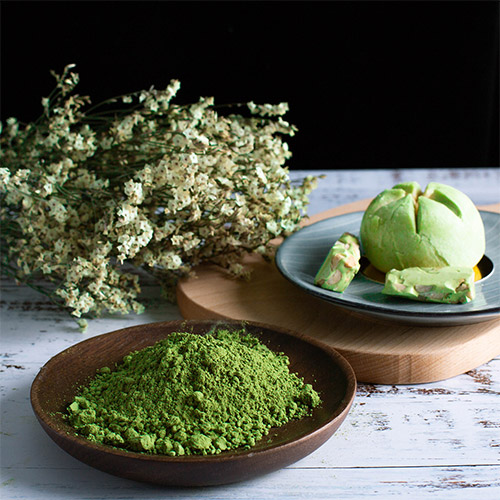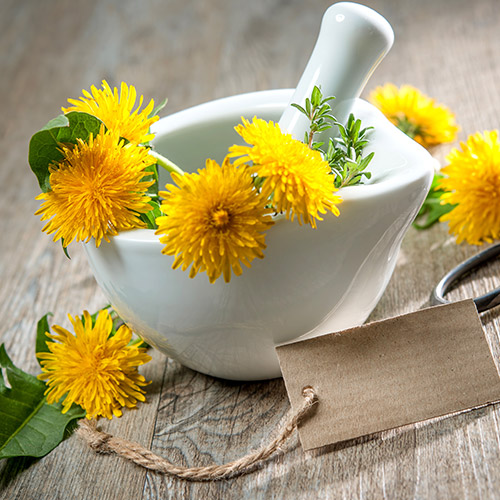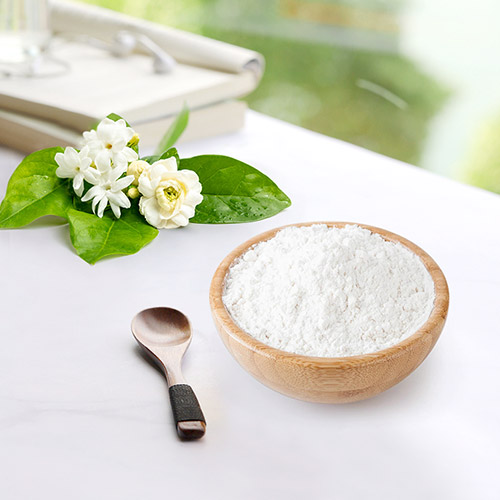
- Products
- Organic Product
PRODUCTS
rosemary extract
Extracted parts: Dried branches and leaves of Spanish rosemary
Extraction method: ethanol solvent extraction
Appearance: yellowish brown powder to white
Main ingredient: rosmarinic acid (≥3% HPLC)
Specifications: 5%-90%
Rosemary extract has antibacterial, anti-inflammatory, anti-viral, anti-tumor, anti-allergic, antioxidant, anti-thrombotic, anti-platelet aggregation, anti-radiation and immunosuppressive effects. Cell damage has a protective effect, and the product can delay the deterioration of food; it is safe, non-toxic; antibacterial; high temperature resistance; Health care products are used in various cosmetic detergents and biological pesticides and other products.

Rosemary is a versatile cash crop from which antioxidants, rosemary essential oil and other pharmaceutical intermediates can be extracted. Antioxidants are powdery substances extracted from rosemary plants, and the main components are phenols, acids, flavonoids, etc. It can prevent and delay rancidity or prolong shelf life, and completely avoid the toxic and side effects of synthetic antioxidants and the weakness of high-temperature heating and decomposition. It has the characteristics of heat resistance, good antioxidant effect and broad spectrum, and can be widely used in tobacco, spices, edible oil, bakery products, fried products, grain and oil food, instant food, aquatic products, meat products and other industries.
Rosemary, also known as tansy, is a rosemary plant of the Lamiaceae family. It is native to the Mediterranean region and is a perennial plant with long, straight stems covered with granules and long, narrow, pointed leaves. Its leaves are dark green above and silver-gray below.
The mechanism of action of the active ingredients of rosemary extract
Rosemary is a natural antioxidant. Antioxidants can be divided into:
1) Free radical terminators, most of which are compounds of phenolic structure, such as tert-butyl hydroxyanisole (BHA), di-tert-butyl hydroxytoluene (BHT), tert-butyl hydroquinone (TBHQ) and tocopherol;
2) Chelating agents, such as EDTA, citric acid, phytic acid, etc.;
3) Singlet oxygen inhibitors, such as carotene, etc. Rosemary antioxidant is not only a free radical terminator, but also a singlet oxygen inhibitor. In addition to flavonoids, the antioxidant components extracted from rosemary are mainly carnosol, carnosic acid, rosmarinic acid and rosmarinol, all of which have active sites of diphenolic diterpenes.
4) Reducing agents, such as ascorbic acid and its salts, sulfurous acid and its salts, riboflavin, etc.
In addition, rosemary also contains a variety of different phenols such as rosemary diphenol and rosemary quinone, and these phenolic substances act together to express the overall antioxidant activity.
And these components are not easy to volatilize and have good thermal stability. Studies have shown that under sealed conditions, the rosemary extract was heated at 204 °C for 18 hours or heated at 260 °C for 1 hour, and its activity was not affected; under the condition of open heating at 204 °C, its antioxidant activity was not affected. Vitality remained 83% after half an hour and 74% after 1 hour. It can be seen that the rosemary extract can withstand the high temperature of spray drying, extrusion and baking. During the oxidative chain reaction, because the generated phenolic oxygen radical is relatively stable, it reacts very slowly with lipid compounds, thus blocking the transmission and growth of the free radical chain and inhibiting the progress of the oxidation process.
It is a phenolic acid compound with certain physiological activity, and its structural feature is that there are four -OH on two benzene rings. Therefore, it is a potent antioxidant in rosemary. The experimental results show that rosmarinic acid has mild antithrombotic effect, and its mechanism may be related to antiplatelet aggregation and increasing fibrinolytic activity. Huang Liandong et al. reported that the anti-inflammatory mechanism of rosmarinic acid may be, 1) related to the inhibition of 5-lipoxygenase (5-LO) in the metabolism of arachidonic acid. 2) It inhibits the synthesis of complement-dependent PGI2 and interferes with the activity of C3 convertase in different pathways. 3) Antioxidant and eliminate free radicals.
Applications of rosemary extract
Rosemary extract shows great potential application prospects in medicine. Traditional Chinese medicine believes that rosemary is warm and pungent in nature, has the effects of fragrant stomach, sedative and soothing, and is often used to treat various headaches, neurasthenia, etc. Rosemary can also regulate blood pressure, reducing the permeability of capillaries to normalize hypotension (but its highly stimulating properties are suitable for those with hypertension and epilepsy). Rosemary has a strong antiseptic and antibacterial effect, and has a strong inhibitory and killing effect on Escherichia coli and Vibrio cholerae. In medicine, the antioxidant properties of rosemary can also prevent the oxidative damage of DNA and reduce the occurrence of cancer.
Precautions
(1) It is not suitable for long-term contact with copper and iron at room temperature, and it is forbidden to contact with copper and iron at high temperature (above 80 ℃);
(2) This product should not be used under alkaline conditions;
(3) Make sure to mix evenly when using.
Product process (QA QC full tracking)
Raw material selection - cleaning and crushing - raw material extraction - solution filtration - proportional concentration - purification and purification - spray drying - crushing and sieving - sampling inspection and storage packaging
FAQ

SEND ENQUIRY
If you have any enquiry about quotation or cooperation, please feel free to email us at E-mail or use the following enquiry form. Our sales representative will contact you within 24 hours. Thank you for your interest in our products.





